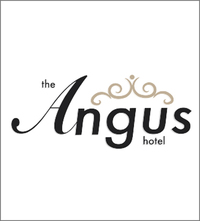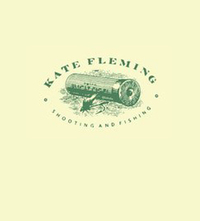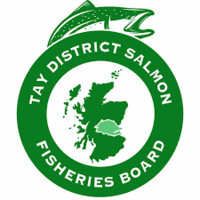Many thanks to
The Angus Hotel for facilitating this camera's location. The River Ericht, located in Perthshire, Scotland, is formed by the merging of the rivers Blackwater and Ardle. It flows south for approximately 10 miles before joining the River Isla and eventually the River Tay. The river passes through the remarkable Craighall Gorge and divides the burgh of Blairgowrie and Rattray. In the past, the swift-flowing water of the river powered several textile mills. Certain sections of the river offer opportunities for game fishing, specifically for salmon and trout. Among the locals, the town is commonly referred to as 'Blair'.The name Blairgowrie translates to "Plain of Gowrie" in Scottish Gaelic, written as Blàr Ghobharaidh or Blàr Ghobhraidh in the Gaelic language. The name Rattray, which is Raitear in Gaelic, possibly originates from an English term related to the Gaelic word "ràth" meaning "fortress" combined with a Pictish expression akin to the Welsh word "tref" meaning "settlement". The area surrounding Blairgowrie has been continuously inhabited since the Neolithic period, as evidenced by the Cleaven Dyke, a cursus monument located 2 miles (3 kilometers) south-southwest of the town, and a Neolithic long mortuary enclosure situated 4 miles (6 kilometers) west-southwest at Inchtuthil. The region also contains several stone circles dating back to that era, notably the circle intersected by the road at Leys of Marlee, located 1 mile (1.5 kilometers) west of Blairgowrie. Numerous artifacts from the Neolithic and Bronze Age have been discovered in the vicinity, including flint arrowheads, spearheads, knives, and scrapers found at Carsie, half a mile (800 meters) south of Blairgowrie, which are currently exhibited at Perth Museum. Additionally, bronze axes and a bronze sword, now housed in Kelvingrove Museum in Glasgow, have been unearthed.Approximately 4 miles (6 kilometers) west-southwest of Blairgowrie, the remains of a Roman legionary fort can be found at Inchtuthil, dating from the period between 80 and 90 AD. Unaffected by subsequent development, this site holds significant archaeological importance and is considered one of the most notable in Britain. Pictish remnants are abundant in this part of Scotland, and one of the largest collections of Pictish sculptured stones can be found 5 miles (8 kilometers) east of the town at the Meigle Sculptured Stone Museum. The extensive collection, all discovered in Meigle, suggests that this area held ecclesiastical significance between the 8th and 10th centuries.From around 1600 to the early 19th century, Blairgowrie maintained a relatively stable population, recorded at 425 inhabitants in the first Statistical Account in 1792. The second Statistical Account of 1853 notes a disproportionate increase due to an influx of families attracted by the expanding textiles industry. During that time, Gaelic was in decline but still partially spoken in the upper part of the parish, with English being the predominant language. In 1634, Blairgowrie was granted barony status in favor of George Drummond of Blair through a royal charter from Charles I, and it became a free burgh in 1809. In 1724, the military road from Coupar Angus to Fort George, which passes through the town along the A923 and A93 routes, was completed. The town experienced significant growth in the 19th century, mainly due to the employment opportunities provided by the numerous textile mills constructed along the River Ericht. However, these mills are now closed. By 1870, there were 12 mills along the river, employing nearly 2,000 men and women, and the population had increased from 400 in the 1700s to 4,000. The abandoned mill buildings are visible from the riverside walk west of the bridge and Haugh Road to the east. Keithbank Mill has been converted into apartments.In the 20th century, Blairgowrie saw the development of soft fruit cultivation, particularly raspberries and strawberries, which became a significant part of the town's economy. Smedleys opened a cannery on Haugh Road, Adamsons established a jam factory on Croft Lane, and substantial quantities of table berries and pulp were sent to markets and jam factories throughout Britain. Berry pickers were brought in by bus from Perth and Dundee, and large encampments were set up on farms to accommodate pickers from further afield, primarily from the Glasgow area, who considered this their annual holiday. They were joined by the traveling community, who congregated here during the berry season. Notably, the Tin City at Essendy was a prominent example, housing workers in a complex of tin huts equipped with a chapel, post office, shop, kitchens, and other amenitiesThe Tin City no longer exists, but now every fruit farm has a caravan site to accommodate the hundreds of Eastern European students who arrive every summer to pick the fruit.
The arrival of the railway brought about a revolution in the textile and soft fruit industries. Blairgowrie railway station served as the terminus of a branch line from Coupar Angus on the Scottish Midland Junction Railway, which later became part of the Caledonian Railway. The railway ceased operations in the 1960s, and the extensive railway yards now house the Tesco supermarket and Welton Road industrial estate. Blairgowrie once had a bustling livestock market located at the bottom of the Boat Brae, but it closed in the 1960s and has since been replaced by the Ashgrove Court sheltered housing complex.






